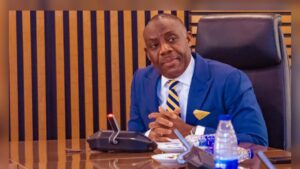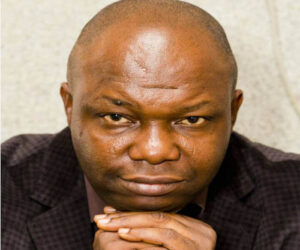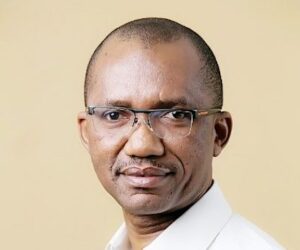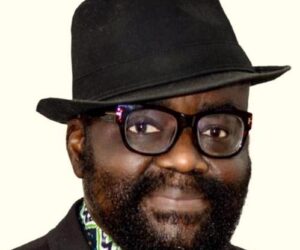INTRODUCTION
Last week, we dealt with the following issues: Failure to Accommodate The Rising Population Demands; The Factor Of Greed; How Have We So Far Fared? The Exodus Focusing On Falling Standards Of Education In Nigeria; The Crisis Of Manpower; Abandoned Projects; the exodus of teachers. After which we stated that we are no longer at ease in our educational institutions and later x-rayed how bad the educational crisis in Nigeria has become. Today, we shall look at kidnapping, armed banditry and herdsmen menace; UNICEF corroborations and other forms of crises. Read on.

Kidnapping, armed banditry and herdsmen’s menace
We have gotten a terrifying situation where armed bandits and kidnappers now hoist flags on Nigerian soil, collect taxes from Nigerians; and give them identity cards and passes. They challenge Nigeria’s sovereignty and suzereignty. Some hold school children hostage and demand from their parents, bags of salt, rice, maize, millet, and beans; baskets of tomatoes, tarodo, tatashe and miango hot pepper. They also demand for jerry cans of palm oil, vegetable oil; Maggie cubes, ugba and other condiments. These are necessary to feed the children of traumatized Nigerians held firmly in their gulag, to keep them alive for payment of enforced ransome. Herdsmen invade homes and farms freely. They kill, maim, rape and pillage. The government appears helpless. If these are not symptomatic of a failed state, then tell me what a failed state is.
Unicef corroborates
These alarming figures were corroborated by UNICEF itself (the United Nations Internal Children’s Emergency Fund) in a statement (UNICEF warns of Nigerian education crisis; https://www.unicef.org. Accessed on 1st October 2022) to mark the International Day of Education the 24th day of January, 2022.
According to the world body, “In 2021, there were 25 attacks on schools, 1,440 children were abducted, and 16 children killed. In March 2021, no fewer than 618 schools were closed in six northern states (Sokoto, Zamfara, Kano, Katsina, Niger and Yobe) over the fear of attack and abduction of pupils and members of staff. The closure of schools in these states significantly contributed to learning losses for over two months”.
While welcoming the Government’s pledge to increase annual domestic education expenditure by 50% over the next two years and by 100% by 2025, UNICEF notes that the 7.7% allocated to the education in the 2022 Budget was way behind the internationally recommended benchmark of 15-20 percent of annual national budgets. The organization described as “tragic” what it called “the high number (35%) of children who make it to a classroom, but never make the transition from primary school to secondary school – thereby cutting offer their changes for a secured future”.
Echoing these deep-seated sentiments, but in more frightening grisly details is policy and leadership expert, Dakuku Peterside, who, in a piece titled (Published https://premiumtimesng.com on May 16, 2022. Accessed on 1st October 2022), “Nigeria’s education sector crises and a future ruined”, opined that “the biggest challenge we face as a country is not about the challenges of today, but a bleak future staring Africa’s biggest economy and the most populous black nation, in the face (given) the insensitivity of our leaders to the destruction of (the) section that offers us hope to safeguards and recover the future: the educational sector . . . what is frightening is the inability of our policy makers to connect the monumental rot and negligence of the education sector today to our bleak future . . . Nigeria seems to be retrogressing in all aspects of education and skills acquisition.
The net quantity and quality of education in Nigeria is comparison to past decades, given our population and economy, is negative. The products of our education system cannot measure against their opposite numbers in India, China or the European Union . . . The loss of confidence in Nigeria’s education is led by the political and other elite class. Over 95 percent of the elite leaders in government, business and technocratic professions are educating their children in tertiary institutions in Europe and the United States. Consequently, there is hardly any serious policy discussion about education in Nigeria . . . Our education sector needs a quantum overhaul that targets its outcomes. We need improvements, starting from primary education, where we see many but-of-school children. Secondary education needs a total overhaul, (given its) declining standards and low attainment in national examinations like NECO and WAEC. The complete collapse of the higher education sector, where workers engage in incessant strike actions, leading to half-baked graduates – who are grossly untrainable and unemployable – needs immediate attention. Education has suffered from insecurity at the basic primary and secondary levels in most parts of the country. The “unknown gunmen” and IPOB agitators have terrorized the South-East and forced a sit-at-home observation on every Monday (of the week). This has affected schools in the five South-East States, where 20% of the time allotted to education is lost each week. Students in the South-East States missed examinations scheduled for Mondays nationally during necessary national examinations like WAEC, NECO and UMTE.
In Sokoto and Zamfara States (in the North-East),public school students did not register for the WAEC exam this year (majorly) because the government did not pay (the requisite fees on their behalf). (Obviously), this indicates retrogression in teaching, learning and examination for certification. In other parts of the North, the uptake of the WAEC examination is minimal, even with some state Governments paying (for exam fees) for the students. Student in Internally Displace person (IDP) camps worry more about survival than getting an education. Government poorly funds government-owned schools and they owe teachers’ salaries. Most government schools in Southern Nigeria are overcrowded and are populated by children from relatively poor backgrounds (who can ill-afford) the private primary and secondary institutions. . . (while) the rich, (upper) and middle classes are largely immune (as they can afford private education both locally and overseas), the widening gap between the haves and the have-not inevitably results in inequality. (This is because) in the past, education was the great leveler, as poor school children often outperformed those from more affluent backgrounds. This engendered a can-do-spirit in the former and inculcated in them the belief that, with hard work, anything was possible.
(With the prolonged strike by lecturers in public universities) students of those institutions idle away at home and sometimes constitute nuisances to their families and communities. Governments at all levels have (failed in their responsibilities in the education sector. This is because) education policies are either not fit-for-purpose or failing to yield the desired results. Educational (standards) monitoring institutions – where they exist – are, at best, moribund. (They exert little or no control over) private educational institutions, whose charges are so high that they eat a sizeable chunk of the incomes of parents.
(Talking of which globally), the recommended average percentage of GDP to total public and private expenditure on education is 5 percent (but this is higher in developed countries). For example, (according to UNESCO) among the 34 OECD countries reporting data in 2015, Norway spent 6.4 percent of its GDP on education, the United States and the United Kingdom spent 6.1 percent and 6.2 percent, respectively. (By contrast, the world body reports that) the figure for Nigeria in 2017 was 0.85 percent of her GDP”
Other forms of crises
Beyond the foregoing, Omebe & Omebe (The crisis of Education in Nigeria, the International Journal of Humanities, Social Science and Education, Vol.2, Issued 12, December 2015. www.arcjournals.org; Accessed on 1st October 2022), identified Examination Malpractices, Menace of Secret Cults, Low Enrolment/Poor Products/Abandoned Projects among key “dimensions and manifestations of the crises of education in Nigeria”. They elaborated on these as follows:
i. Examination malpractices:
Exam malpractices such as impersonation (hiring people – either students or otherwise – to write exams); collusion involved in exam invigilators, giving assistance to students in exam halls; exam leakages, where question papers are seen by candidates, prior to writing the exams; mass cheating, depicted in large-scale, organized cheating involving school authorities, exam officials and candidates; smuggling of answer-scripts, involved in candidates benefiting from external assistance to take duly prepared answer scripts to and from exam halls; Dubbing, involved in candidates copying from each other; Bringing foreign materials such as textbooks, cribs and past papers and photocopies of prepared answers; Assault on or insulting exam officials or invigilators who refuse to co-operate with candidates bent on cheating; procurement of answer booklets; inscription of materials on parts of a candidate’s body or objects/materials; personality connection, whereby candidates leverage on influential members of the society, their parents or even cult members to influence exam results.
ii. Secret cultism:
Secret cult have been defined as an assemblage of people share ideas and beliefs which should not be disclosed to non-members or any association or organization which carries on or conducts its activities in secret. The incidence of cultism in our institutions of learning is rising with devastating consequences in terms of assault, destruction of properties, death (sometimes involving decapitation) members deploy a variety of dangerous weapons and in many cases, they are laws unto themselves;
iii. Low enrolment, poor academic performance, poor products and abandoned projects:
This is best understood under the sub-heads of Basic education, Secondary education and Universities.
With regards to Basic education, its challenges include high numbers of out-of-school children (alluded to earlier) particularly in the North. As for secondary education, Omebe & Omebe cite ‘Poor Performance Records’ as its bane, manifesting in the abysmal quality of intakes into Nigerian Universities (i.e. from secondary schools) the vast majority of whom barely know their grammer (in addition to the low level of their knowledge; high failure rate in NECO exams (98% in 2008, 88% in 2009, 89% in 2010, 92% in 2011 and 68% in 2012); Low level of students who obtained credit in five subjects, including English & Maths in May/June Exams (23 percent in 2008, 26 percent in 2009, 24 percent in 2010, 31 percent in 2011 and 39 percent in 2012), and finally, the percentage of students who score minimum of 200 marks (out of a possible 400) in the Joint Admissions and Matriculation Board (JAMB) exams ranges between 36 percent in 2012 and 46 percent in 2009 – for an average of 42 percent. In 2012, only 3 candidates out of 1,503,093 candidates scored above 300 and only 5 percent score 250 or more marks.”
(To be continued).
Thought for the week
“An education isn’t how much you have committed to memory, or even how much you know. It’s being able to differentiate between what you know and what you don’t”. (Anatole France)








